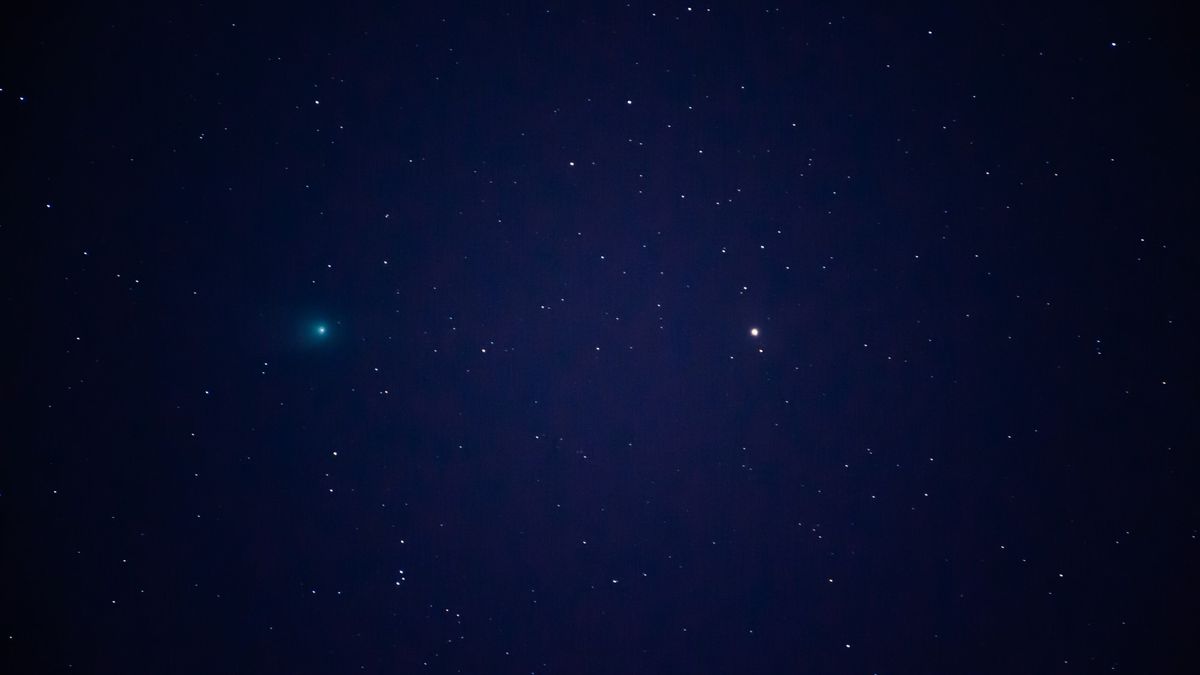It’s baffling to see Comet AC/2022 E3 (ZTF) through binoculars, but what will it look like up close?
Scientists couldn’t get enough of such a stunning green spacecraft comet while swinging through the interior Solar System —but they will in the next decade, thanks to the European Space Agency’s (ESA) Comet Interceptor. This mission, scheduled for 2029, will spend a few years hovering 1 million miles (1.5 million kilometers) from Earth. a land, waiting for an interesting comet to venture deep enough into the inner solar system to fly by. But if the Comet Interceptor was already in space, scientists could have sent it towards it. Comet C / 2022 E3 (ZTF).
Michael Kuipers, a researcher with the European Space Agency (ESA), said at a meeting of NASA’s Small Object Evaluation Group on Wednesday (January 26).
Connected: Stunning images of the bright green comet C/2022 E3 (ZTF).
Kuipers said the science team prepared for the mission by evaluating “hypothetical targets” — things the Comet Interceptor team might consider once the probe is in space. Whichever comet it ends up with will be subject to a thorough, if brief, examination by the main probe and two smaller probes.
Mission scientists hope to target an active comet that has not passed before Today Before. This kind of thing will come out of the ice Oort cloud beyond the orbit of Pluto. By catching an object in its first ring from the sun, scientists will see the original material react to the sun’s heat.
Or, if the Comet Interceptor is particularly lucky, scientists will discover another interstellar object, its successor. Oumuamua And Comet Borisov This makes a one-time short trip through our solar system.
It’s an unusual situation for a mission — while many spacecraft get additional targets after launch, the Comet Interceptor will be in space before scientists see its main target.
The spacecraft will cruise with the European Space Agency’s Atmospheric Infrared Remote Sensing Mission (AREL), which can analyze the atmosphere of up to 1,000 atmospheres over the course of four years. outer planets.
After launch, the Comet Interceptor heads toward Earth and the Sun Lagrangian point 2 (L2), the same underground ‘car park’ where it is located James Webb Space Telescope tracks. At Lagrangian points, the force of gravity balances out, so it would be relatively cheap to keep the spacecraft on the station while scientists wait to find a promising target. The team must outline comet rendezvous plans at least six months before leaving L2.
But imagine the Comet Interceptor was already at its station in early March 2022, when scientists first detected Comet C/2022 E3 (ZTF). Interested expedition personnel could start playing with the tracks that would allow the comet interceptor to meet the object. They found that if the spacecraft had lifted off in late August, it could have passed the comet on February 12, just a month after the snowball approached the sun and less than a year after the object was discovered.
However, Kuipers noted that C/2022 E3 is not an ideal target. The team has to prepare for departure very quickly, and flying out of the sun is a bit of what scientists like. And while the mission crew hopes to capture a comet that has never visited the inner solar system before, C/2022 E3 did, albeit some 50,000 years ago.
“Maybe it’s not dynamically new,” Kuipers said. “It’s very active, so we might accept it, but it’s activity dependent.”
And if this scenario were played out during a real Comet Interceptor mission, launch preparation time probably wouldn’t be an issue. That’s thanks Vera Rubin Observatory in Chile, which will conduct a 10-year Legacy Space-Time Survey (LSST) starting in early 2025. The LSST is expected to discover about 6 million objects in the solar system, and most discoveries will come relatively early. this study.
“Discovery has been delayed a bit, but we’re not worried about that because we expect these comets to be discovered significantly earlier with the LSST,” Kuipers said of the hypothetical C/2022 E3 scenario.
The analysis sheds light on the decisions scientists must make during the Comet Interceptor mission. They only get one shot, not knowing in advance what the solar system will send. If they get too excited, they may miss out on a more interesting target; If they are very careful, a few years after the start, they still find themselves at Level 2, running out of time and seeing no purpose. While the dream is an active, long-period comet, the team needs to know what’s going on and if an object like C/2022 E3 pays a visit.
“Statistically speaking, we would expect a few candidate targets, not dozens,” Kuipers said. “We can’t dynamically count on a new comet, so we’ll probably use a comet like ZTF.”
Email meghan bartels at [email protected] Or follow him on Twitter: @mbartelsMegan Bartell. Follow us on Twitter @Spacedotcom and on Facebook.












































